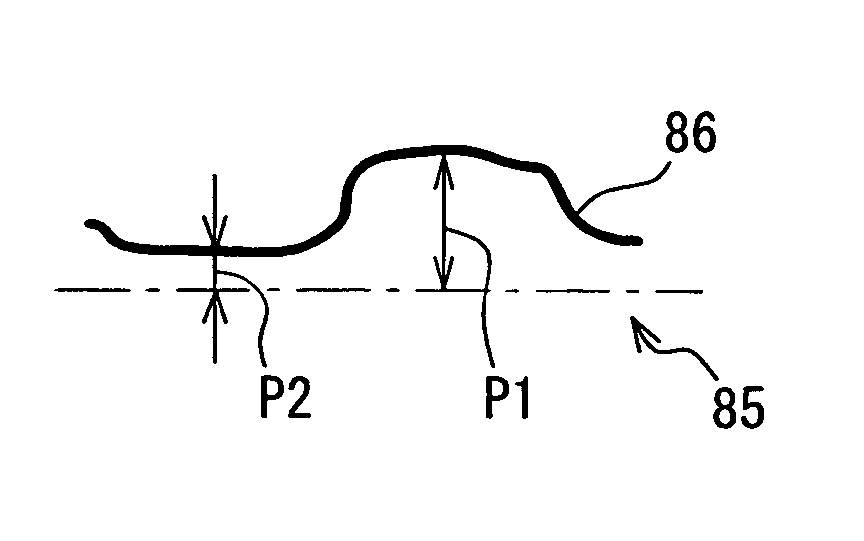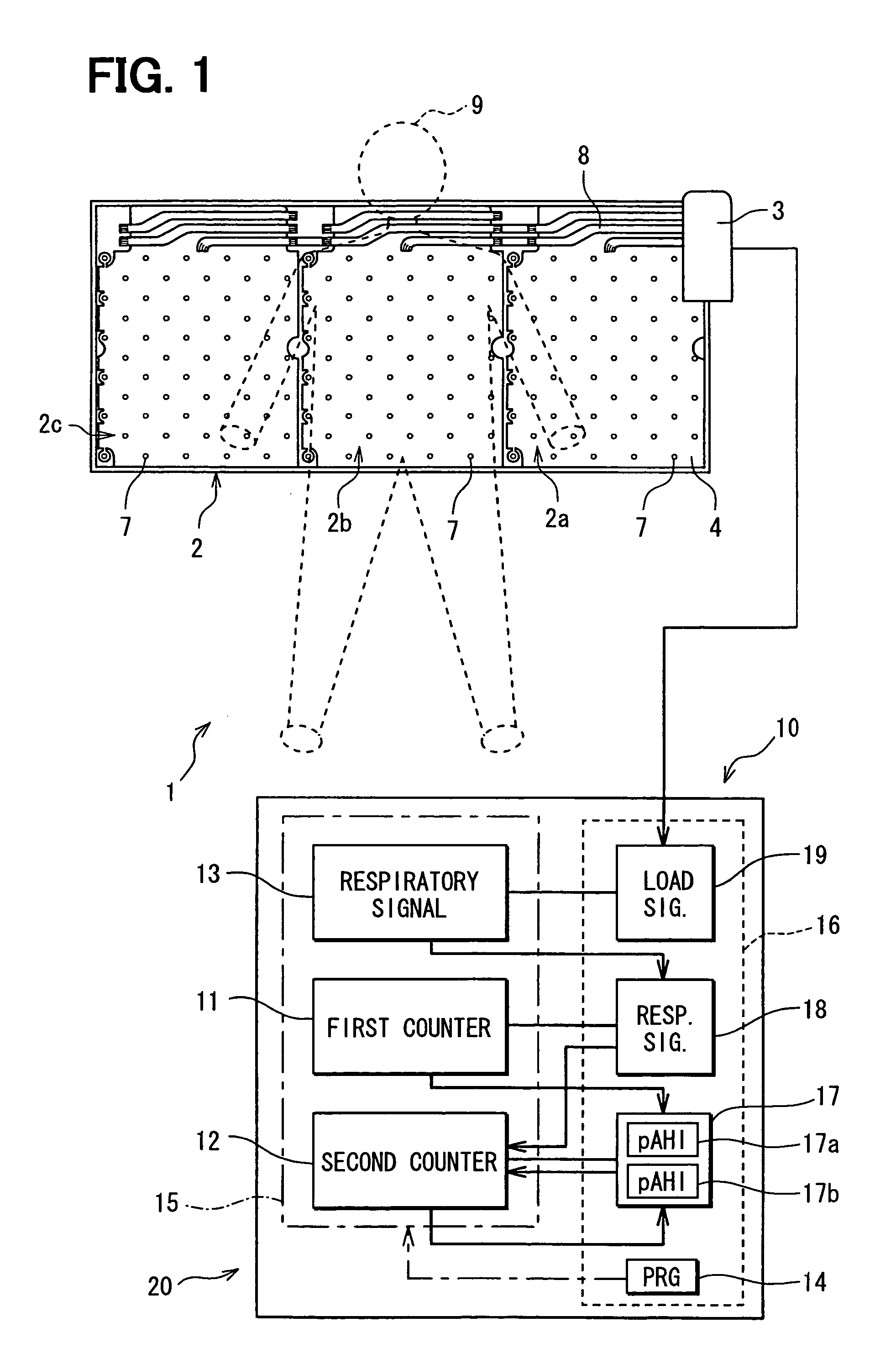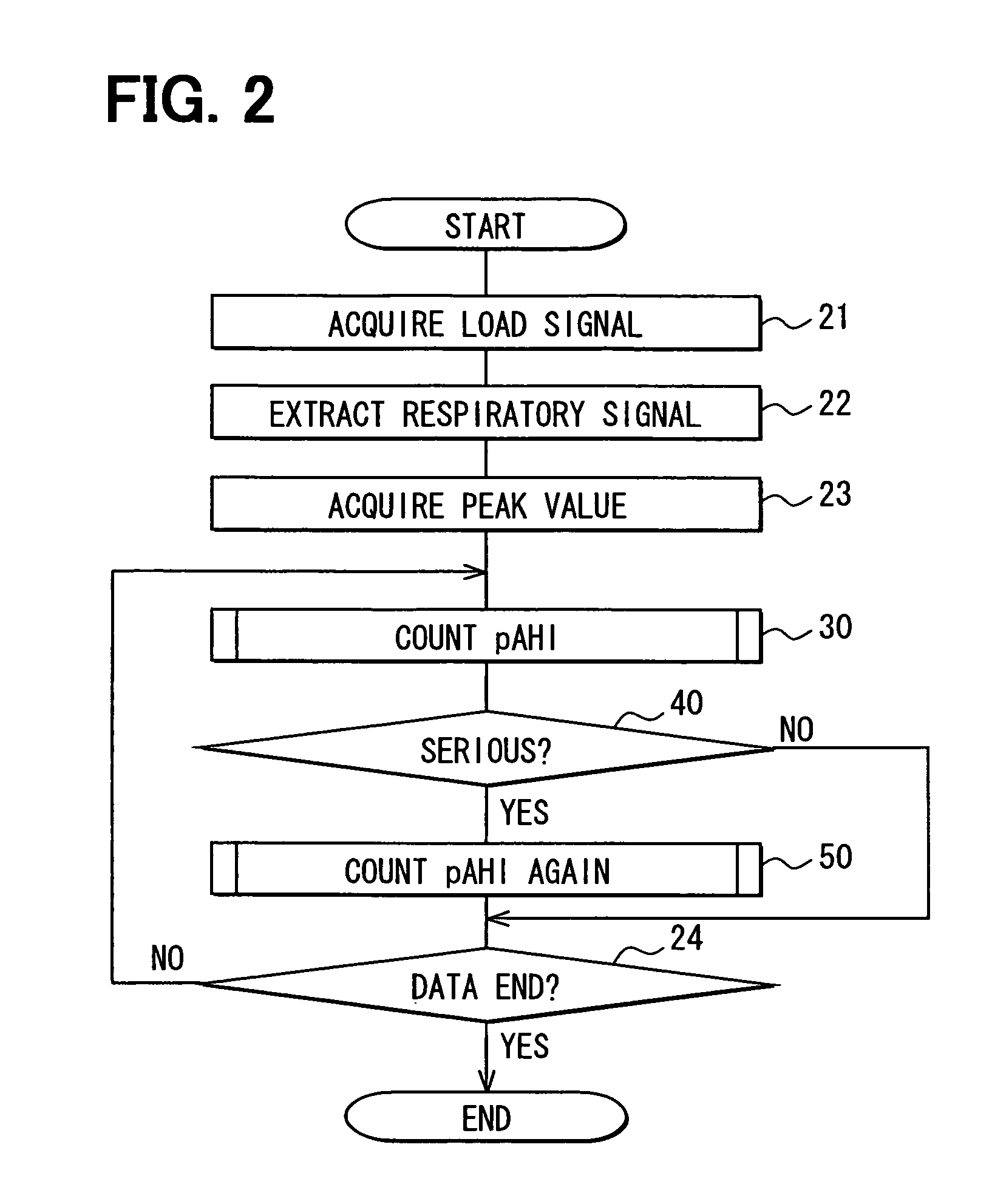Method and apparatus of analyzing respiratory signals corresponding to changes in subject's loads applied to bed
a technology of respiratory signals and changes in load applied to the bed, which is applied in the field of methods and apparatus of analyzing respiratory signals, can solve the problems of difficult detection of situations during natural sleeping, insufficient oxygen supply, and significant burden on the sleeping patient, and achieve the effect of increasing measurement accuracy
- Summary
- Abstract
- Description
- Claims
- Application Information
AI Technical Summary
Benefits of technology
Problems solved by technology
Method used
Image
Examples
Embodiment Construction
[0027]A living body information detection system shown in FIG. 1 is described as a system to determine apnea conditions of patients of the sleep apnea syndrome. The living body information detection system includes: a sensor sheet 2 on which multiple pressure sensors (pressure sensitive sensors) 7 as pressure sensitive elements are arrayed; and a control unit 3 that outputs signals from the multiple pressure sensitive sensors 7 to an analyzing apparatus 10. The sensor sheet 2 includes multiple subsheets 2a, 2b and 2c. The subsheets 2a, 2b and 2c whose base material is a thin plastic sheet 4 allow the multiple pressure sensitive sensors 7 mounted on the sheet 4 to be regularly disposed in an appropriate interval. The sheet 4 has a wiring 8 for outputting signals from the multiple pressure sensitive sensors 7. Therefore, by placing the sensor sheet 2 on a bed or the like, numerous pressure sensitive sensors 7 can be placed on the bed. Without having to attach the pressure sensitive se...
PUM
 Login to View More
Login to View More Abstract
Description
Claims
Application Information
 Login to View More
Login to View More - R&D
- Intellectual Property
- Life Sciences
- Materials
- Tech Scout
- Unparalleled Data Quality
- Higher Quality Content
- 60% Fewer Hallucinations
Browse by: Latest US Patents, China's latest patents, Technical Efficacy Thesaurus, Application Domain, Technology Topic, Popular Technical Reports.
© 2025 PatSnap. All rights reserved.Legal|Privacy policy|Modern Slavery Act Transparency Statement|Sitemap|About US| Contact US: help@patsnap.com



